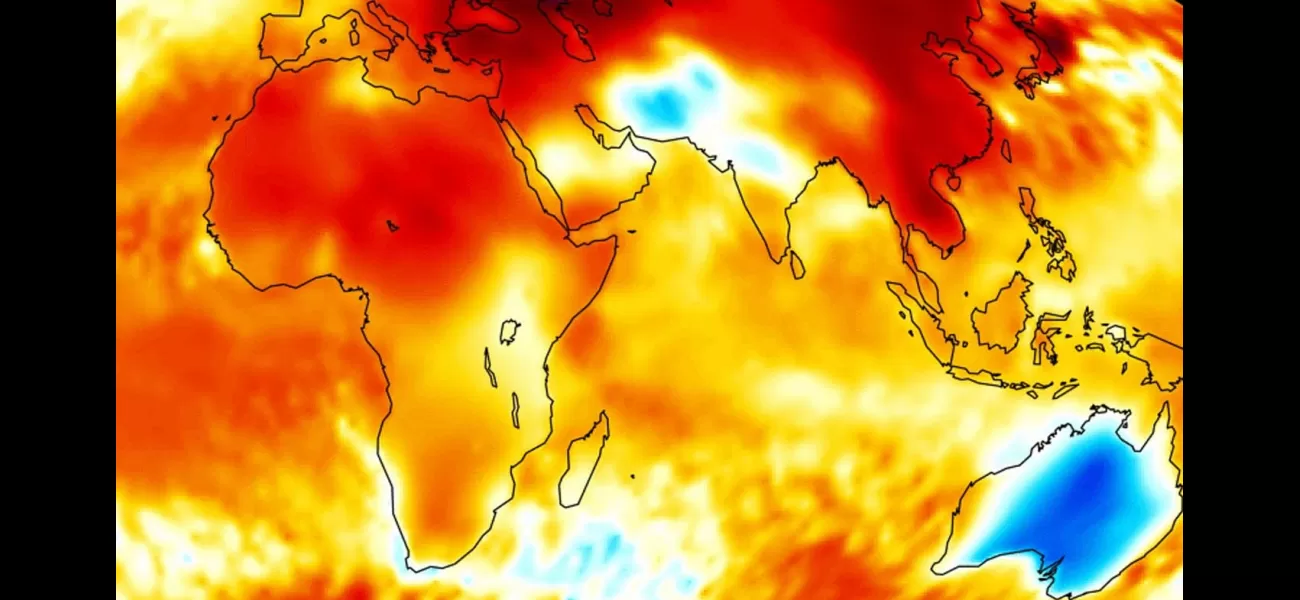Australia is a cold spot on a planet experiencing its hottest temperatures ever recorded.
Australia was one of the few cooler areas on Earth last month.
May 16th 2024.

Last month, Australia experienced an unusual spell of cold weather, standing out as a cool island amidst a global heatwave that has been setting records for some time now. According to data released this week by the non-profit organization Berkeley Earth, the Earth's global average air temperature in April was 0.11 degrees higher than the average from 1850 to 1900. This marked the highest April average temperature on record, surpassing the previous record set in 2020 by 0.14 degrees.
It seems that Australia has been caught in the midst of this unprecedented global warmth, with April being the 11th consecutive month to break the record for the highest global average temperature. This streak has been going strong since June 2023, making it quite a significant and concerning trend. However, amidst all this heat, Australia stood out as an exception, registering its first cooler-than-average April in nine years.
In fact, the mean air temperature over Australia in April was lower than the average from 1951 to 1980. This made Australia one of the few places on Earth that experienced cooler temperatures last month. The reason behind this cool spell in Australia was a high-pressure system located south of Western Australia. This caused southerly winds to blow cool air across the continent, creating a cooling effect. When these high-pressure systems are large and strong, the southerly winds can persist and bring cool air across the entire continent.
While the rest of the world was facing record-breaking heat, Australia was being kept cooler than normal due to this stagnant weather pattern. Meteorologists have pointed out that this is a prime example of how periods of cold weather can mask the overall trend of warming caused by climate change. It serves as a reminder that the effects of climate change can manifest in different ways and that we must continue to monitor and address this issue.
It seems that Australia has been caught in the midst of this unprecedented global warmth, with April being the 11th consecutive month to break the record for the highest global average temperature. This streak has been going strong since June 2023, making it quite a significant and concerning trend. However, amidst all this heat, Australia stood out as an exception, registering its first cooler-than-average April in nine years.
In fact, the mean air temperature over Australia in April was lower than the average from 1951 to 1980. This made Australia one of the few places on Earth that experienced cooler temperatures last month. The reason behind this cool spell in Australia was a high-pressure system located south of Western Australia. This caused southerly winds to blow cool air across the continent, creating a cooling effect. When these high-pressure systems are large and strong, the southerly winds can persist and bring cool air across the entire continent.
While the rest of the world was facing record-breaking heat, Australia was being kept cooler than normal due to this stagnant weather pattern. Meteorologists have pointed out that this is a prime example of how periods of cold weather can mask the overall trend of warming caused by climate change. It serves as a reminder that the effects of climate change can manifest in different ways and that we must continue to monitor and address this issue.
[This article has been trending online recently and has been generated with AI. Your feed is customized.]
[Generative AI is experimental.]
0
0
Submit Comment





